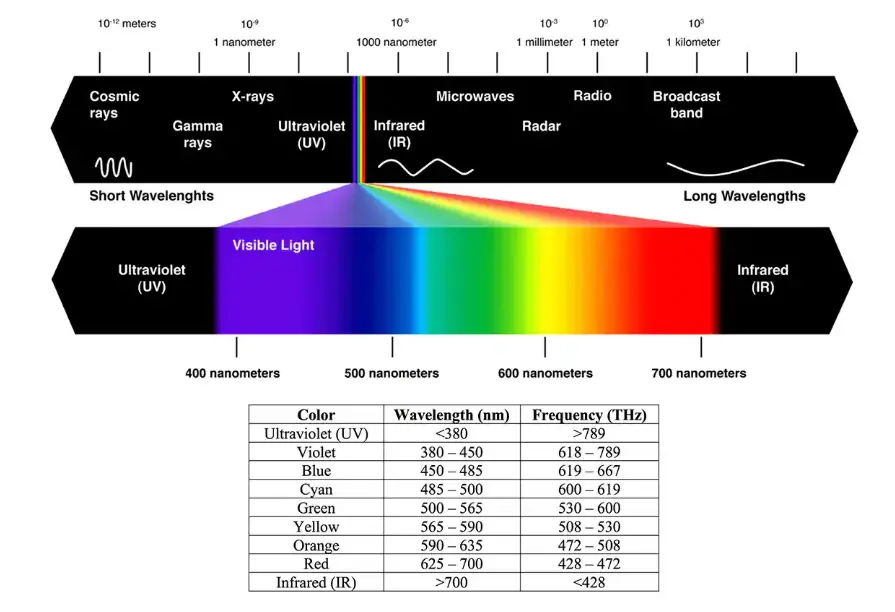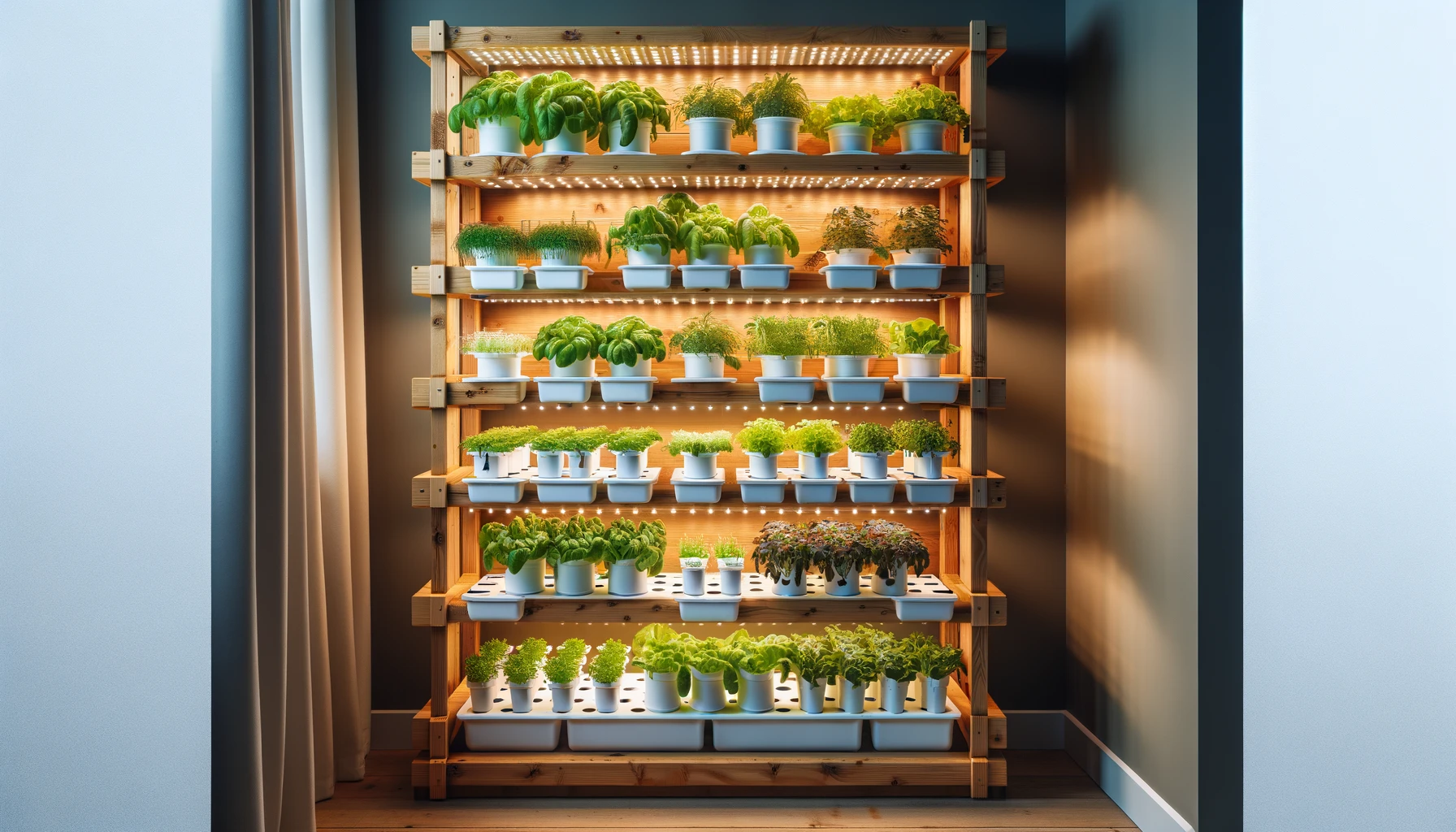Indoor gardening has gone quite easy with the advent of LED grow lights, offering energy efficiency and optimal growth conditions for plants. A crucial aspect of these lights is their color spectrum, which plays a pivotal role in influencing plant growth and development. This article walks you through how different colors of LED grow lights impact plant growth, providing valuable insights for both amateur and professional gardeners.
The Science Behind LED Grow Light Colors
Different colors in the LED light spectrum play unique roles in plant growth and development. Each growth light spectrum, ranging from the visible to the non-visible spectrum, has distinct effects on various aspects of plant physiology. Let’s explore these colors and their specific influences on plants.

Blue Light: The Vegetative Booster
Blue light, ranging from 400 to 500 nanometers, is essential during a plant’s vegetative stage. It maximizes chlorophyll absorption, promoting healthy leaf and stem growth. Studies have shown that when exposed to blue light, plants develop strong, healthy stems and leaves, which is crucial for the early stages of growth.
Red Light: Flowering and Fruiting
Red light, between 620 to 750 nanometers, is vital for the flowering and fruiting stages of plants. It stimulates phytochrome interaction, which influences flowering, seed germination, and fruit production. Integrating red LED grow lights can significantly enhance the blooming and fruiting phase, leading to a more bountiful yield.
Green Light: Beyond Human Perception
Although less discussed, green light (500-600 nanometers) also plays a role in plant growth. Contrary to popular belief, plants do absorb some green light, which penetrates deeper into the leaf structure, potentially benefiting lower leaves receiving less light. However, its impact is less significant compared to red and blue light.
Ultraviolet (UV) Light: Enhancing Color, Flavor, and Nutrients
Ultraviolet light, particularly in the range of 280-400 nanometers, while not traditionally considered for plant growth, has been found to have unique benefits. It can enhance the color, flavor, and nutritional content of fruits and vegetables, and can also help in controlling plant diseases. However, UV light must be used cautiously as excessive exposure can be harmful to both plants and humans.
Infrared Light: The Heat Factor
Infrared light, beyond 700 nanometers, is primarily associated with heat rather than photosynthesis. While not directly beneficial for plant growth, it can influence the temperature of the growing environment and, as such, indirectly affects plant development.
Balancing the Spectrum for Optimal Growth
Understanding the individual roles of different light colors in the LED spectrum brings us to a crucial aspect of indoor gardening: the use of full-spectrum LED grow lights. While specific colors cater to particular growth stages and processes, a harmonious blend of the entire spectrum offers a more holistic approach to plant growth.
The Importance of Full Spectrum LED Grow Lights
Full-spectrum LED grow lights are critical for simulating the natural sunlight that plants would receive outdoors. This type of lighting provides a balanced blend of all the colors in the spectrum, ensuring that plants receive a wide range of light wavelengths. This broad spectrum includes not just the primary colors of red, blue, and green but also the often-overlooked yellow, orange, ultraviolet, and infrared.
The benefits of full-spectrum lighting are manifold. It supports the complete life cycle of a plant, from germination and leaf development to flowering and fruit production. Additionally, this balanced lighting promotes healthier, more robust growth overall, leading to stronger, more resilient plants. This can be particularly beneficial in controlled environments like hydroponic systems or indoor gardens, where natural sunlight is limited.
Tailoring Light Recipes for Specific Plants
While full-spectrum lights offer a one-size-fits-all solution, the true potential of LED grow lights lies in their ability to be tailored to specific plant needs. Different plants respond differently to various parts of the light spectrum, and understanding these needs can greatly enhance growth, health, and yield.
For instance, leafy greens like lettuce and spinach may thrive under a blue-dominant spectrum. This wavelength encourages strong leaf growth, making it ideal for these types of plants. On the other hand, flowering plants, such as tomatoes or roses, typically require more red light. This wavelength promotes flowering and fruiting, which is crucial for these plants’ development.
Herbs, which are popular in indoor gardens, often require a mix of blue and red light, balancing vegetative growth with the development of flavors and aromas. Similarly, plants like orchids, which have specific blooming requirements, can benefit from a customized light recipe that changes over their growth cycle.
Moreover, recent research suggests that even the less emphasized colors like yellow, orange, and ultraviolet can play a supportive role in certain plant processes. For example, ultraviolet light can enhance the production of secondary metabolites, leading to richer flavors and colors in fruits and vegetables.
The tailoring of light recipes also extends to the intensity and duration of exposure. Different stages of growth may require different light intensities, and the day/night cycle can be replicated to match a plant’s natural environment. This level of control can lead to more efficient growth and energy usage, which is especially important in large-scale commercial operations.
Conclusion
The influence of different colors of LED grow lights on plant growth is a testament to the technological advancements in indoor gardening. Understanding and utilizing the correct light spectrum can significantly improve plant health and productivity. Whether for home gardening or commercial cultivation, harnessing the power of LED grow lights’ color spectrum is a game-changer in the realm of indoor plant cultivation.


